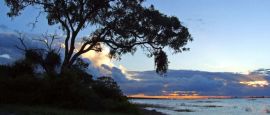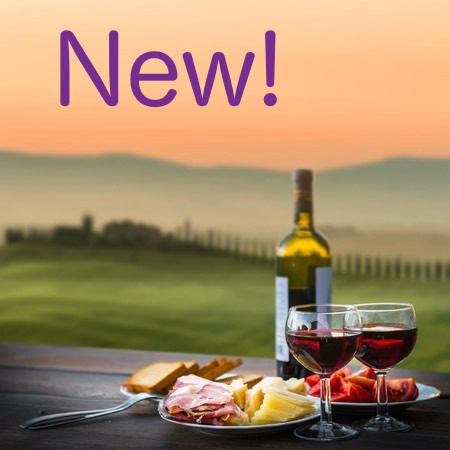Getting around Botswana
Given Botswana's vast distances and remote wilderness areas, domestic air travel is a practical way to get around, especially for visitors heading into the Okavango Delta and other safari regions. The country is well served by a network of small airports and airstrips, with regular scheduled and charter flights linking key destinations.
The main domestic air hubs are Gaborone, Maun, Kasane, and Francistown. Of these, Maun is particularly important: often described as the "gateway to the Okavango Delta", it's the jumping-off point for most light aircraft flights into the Delta's network of bush airstrips and private lodges.
Air Botswana, the national carrier, operates domestic routes between major towns, including Gaborone, Maun, Kasane, and Francistown. However, much of the internal air traffic—especially for tourism—is handled by private charter companies such as Moremi Air, Mack Air, and Kavango Air, which specialise in flying guests to remote safari camps.
Flights in light aircraft are an experience in themselves. With just a handful of seats and spectacular aerial views, these flights offer a unique perspective of Botswana's landscapes—from winding waterways to elephant herds below.
Travelling by car is one of the most practical ways to explore Botswana, especially for visitors heading to national parks, game reserves, and remote lodges. The country has a reasonably well-maintained road network, with paved roads connecting major towns such as Gaborone, Francistown, Maun, and Kasane.
Many visitors choose to hire a vehicle—often a 4x4—to navigate Botswana's more rugged regions. Self-drive safaris are popular, and the country is well-regarded for its camping facilities, scenic routes, and sense of adventure. In more remote areas, roads may be gravel or sandy, and conditions can change quickly depending on the weather.
Public transport exists between major towns, but services are limited in rural areas, making private vehicles the most reliable option for independent travel. Driving is on the left-hand side, and fuel stations are available in most urban centres, though it's advisable to fill up before entering national parks or isolated regions.
Road quality in Botswana varies significantly depending on the region. Major roads linking towns and cities—such as the A1 from Gaborone to Francistown—are generally paved and in good condition. These tarmac roads offer smooth and relatively straightforward travel between key destinations.
However, once off the main highways, road conditions can deteriorate quickly. Many secondary and rural roads are gravel or sand, and may become challenging during the rainy season (November to March) due to flooding, potholes, or mud. In national parks and game reserves, roads are often unpaved and can be deep sand tracks or rugged trails requiring a high-clearance 4x4 vehicle.
Potholes, livestock, and wildlife are common hazards even on sealed roads, especially at night. Caution and lower speeds are strongly advised when travelling outside major towns.
Botswana's roads are classified into a few main categories:
• A-roads are the primary roads, connecting major towns and cities. Most are paved, such as the A1 running from the South African border through Gaborone, Mahalapye, and Francistown. These roads form the backbone of long-distance travel across Botswana.
• B-roads and C-roads are secondary roads. These can be a mix of sealed and gravel surfaces. Many are passable in a regular vehicle, though conditions vary.
• D-roads and tracks are minor or unmaintained roads, often found within national parks, game reserves, and remote areas. These are typically unpaved and may only be navigable with a 4x4 vehicle, especially during or after rainfall.
While road numbers are marked on maps and GPS systems, signage on the ground can be inconsistent—especially on secondary and unpaved routes.
Car hire is widely available in Botswana, particularly in major towns and tourist hubs such as Gaborone, Francistown, Maun, and Kasane. International companies such as Avis, Europcar, and Hertz operate in the country, alongside reputable local firms. Vehicles can be booked in advance online or arranged upon arrival at airports and city offices.
For those planning to stay on paved roads and travel between towns, a standard sedan may suffice. However, for trips into national parks, game reserves, or rural areas, a 4x4 vehicle is strongly recommended. Many car hire companies offer fully equipped 4x4s with camping gear, rooftop tents, and additional fuel tanks for self-drive safaris.
Most rental agreements include insurance and a daily mileage limit. Cross-border travel is possible with prior arrangements, but drivers will need to obtain the necessary permits and inform the rental company in advance.
Taxis are widely available in Botswana's towns and cities, particularly in Gaborone, Francistown, Maun, and Kasane. Most operate as unmetered private taxis, so it is essential to agree on the fare before the journey begins. Prices are reasonable, but may vary depending on the driver, time of day, and distance travelled.
Shared taxis ("kombis"), which follow set routes and pick up multiple passengers along the way, are also common in urban areas. They are cheaper than private taxis but can be crowded and less flexible.
For ride-hailing apps, services such as Yango and inDrive have started operating in Gaborone, offering a more transparent and convenient alternative to traditional taxis. However, availability may be limited outside the capital.
Hotel reception desks can usually call a reliable taxi on your behalf, and many locals use WhatsApp to contact preferred drivers directly. Tipping is not obligatory but rounding up the fare is appreciated.
Touring Botswana on two wheels is not a popular option due to the country's vast distances, high temperatures, and the presence of wildlife on rural roads.
Long-distance buses and coaches operate between major towns and cities in Botswana, offering an affordable and reliable form of domestic transport. Services are most frequent on routes such as Gaborone to Francistown, Maun, or Kasane, with daily departures provided by private bus companies.
Coaches vary in comfort, some offer air conditioning and reclining seats, while others are more basic. Tickets are usually purchased at bus stations or directly from the driver, and reservations may not be necessary except during peak travel periods or public holidays.
Seat belts are mandatory for all passengers, and the use of mobile phones while driving is prohibited unless a hands-free device is used.
The national speed limits are as follows (unless otherwise posted):
• 120 km/h (75 mph) on open roads and highways
• 60 km/h (37 mph) in towns and villages
• 40 km/h (25 mph) near schools and built-up residential areas.
Speed cameras and traffic police are present on major routes, and fines may be issued for violations. Drink driving is strictly enforced, with a legal blood alcohol limit of 0.08%. Random breath tests are conducted, especially during holidays and weekends.
Driving at night outside urban areas is not recommended due to the high risk of encountering wildlife or livestock on the road, and the limited lighting on rural routes.
Many car hire companies include basic breakdown assistance or offer optional extended coverage. If hiring a vehicle for a self-drive safari, it is wise to confirm the procedures for emergencies and recovery, particularly in parks or remote regions. Having said that, travellers exploring remote or off-road areas are advised to carry essential tools, a spare tyre, and plenty of water.
Visitors planning to drive in Botswana must carry the correct documentation at all times. A valid driving licence from your home country is required, and if the licence is not in English, an International Driving Permit (IDP) should be carried alongside it.
If you're entering Botswana with your own vehicle or a rental from a neighbouring country, you'll also need:
• Vehicle registration papers or a certified copy
• Third-party insurance (can be purchased at the border if not already included)
• Cross-border permit (usually arranged by rental agencies)
• Proof of vehicle ownership or authorisation from the hire company to take the vehicle across borders
At the border, you may also be required to pay a cross-border charge, which covers insurance, road usage, and vehicle clearance. Keep all receipts and paperwork with you, as you may be asked to show them at checkpoints.
In larger urban centres such as Gaborone and Francistown, minibuses (known locally as "kombis") operate on fixed routes and are the most common form of public transport for residents. Fares are low and paid in cash, though routes can be confusing for first-time visitors and signage is often minimal.
Taxis are also widely available, both shared and private. Shared taxis follow set routes and pick up multiple passengers, while private taxis charge per trip. Fares are usually negotiable and not metered, so it's best to agree on a price in advance.
Ride-hailing services, Yango and inDrive, are now operating in Gaborone, offering a more transparent and convenient alternative to traditional taxis.
Walking is safe and common during the day in most urban areas, though care should be taken with valuables. At night, taxis are recommended, as street lighting and pedestrian infrastructure can be limited in some areas.
Botswana Railways operates a limited but reliable domestic passenger train service along the eastern corridor of the country. The main route runs between Lobatse, Gaborone, Palapye, and Francistown, with stops in smaller towns along the way. The flagship service is the **BR Express**, which offers both seated and sleeper options, including air-conditioned coaches and a buffet car.
Trains are generally punctual and provide a comfortable alternative to long-distance road travel. Tickets can be purchased at railway stations or online via the Botswana Railways website. Though domestic rail doesn't reach key safari destinations like Maun or Kasane, it is a useful option for travel between eastern cities.
Boat transport in Botswana is geared towards tourism rather than local commuting.
In the remote areas of the Okavango Delta, mokoro (dugout canoe) trips and motorboat transfers are common for tourists travelling between safari camps. These journeys are typically part of pre-arranged tour packages and not used for regular domestic transport.
In the Chobe region, particularly around Kasane, boat safaris and river transfers are also popular among visitors.
Do you have any Feedback about this page?
© 2025 Columbus Travel Media Ltd. All rights reserved. No part of this site may be reproduced without our written permission, click here for information on Columbus Content Solutions.




 You know where
You know where